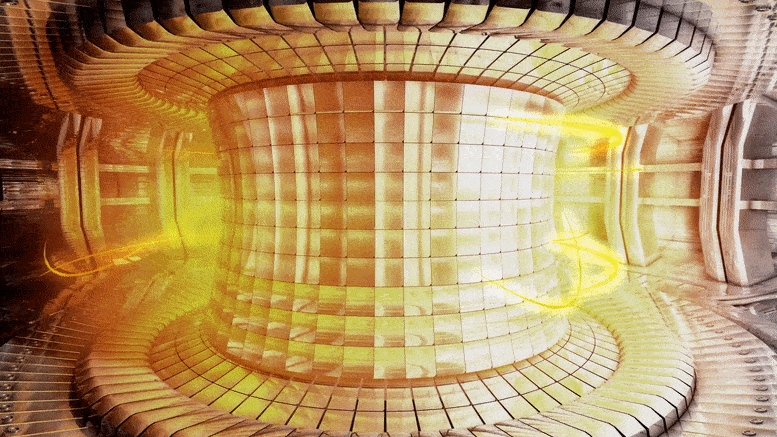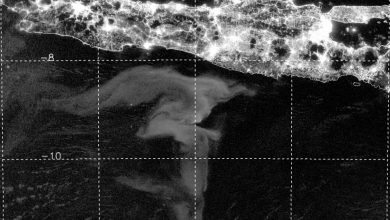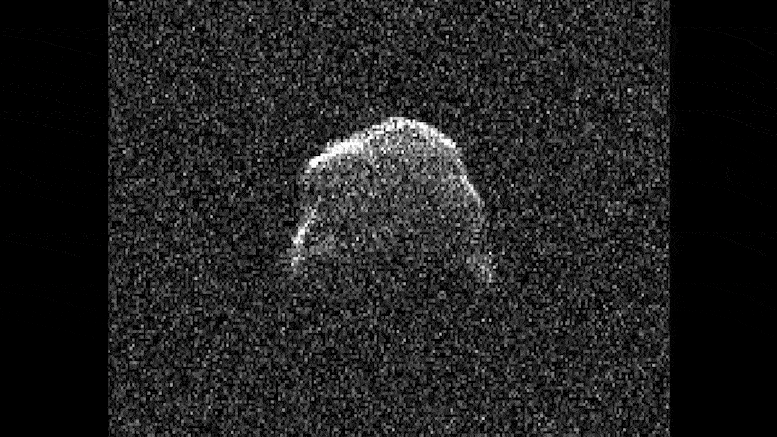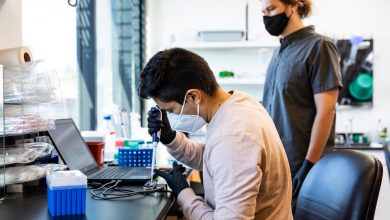Latest Articles
-
Sep- 2021 -4 SeptemberEnergy

A Key Challenge to Harvesting Fusion Energy on Earth
A key challenge for scientists striving to produce on Earth the fusion energy that powers the sun and stars is preventing what are called runaway electrons, particles unleashed in disrupted fusion experiments that can bore holes in tokamaks, the doughnut-shaped machines that house the experiments. Scientists led by researchers at the U.S. Department of Energy’s (DOE) Princeton Plasma Physics Laboratory (PPPL) have used a novel diagnostic with wide-ranging capabilities to detect the birth, and the linear and exponential growth phases of high-energy runaway electrons, which may allow researchers to determine how to prevent the electrons’ damage. Initial energy “We need…
Read More » -
4 SeptemberETs

SETI: The Future of Extraterrestrial Intelligence
How would you feel if, after many decades of searching, we finally found signs of extraterrestrial intelligence? Would you be consumed by wonder and excitement, or does the thought of making contact with an unknown life force somewhere out there in the universe fill you with fear and trepidation? And what impact would this discovery have on us collectively – would it unite us or divide us here on Earth? “Maybe the search for extraterrestrials actually tells us more about ourselves than anything else,” says world-renowned astronomer and deputy executive director of the International Centre for Radio Astronomy Research, Professor…
Read More » -
4 SeptemberScience

Scientists are using new satellite tech to find glow-in-the-dark milky seas of maritime lore
Lead image: For centuries, sailors have told tales of huge swaths of ocean glowing on dark nights. (Image credit: Steven D. Miller/NOAA) For centuries, sailors have been reporting strange encounters like the one above. These events are called milky seas. They are a rare nocturnal phenomenon in which the ocean’s surface emits a steady bright glow. They can cover thousands of square miles and, thanks to the colorful accounts of 19th-century mariners like Capt. Kingman, milky seas are a well-known part of maritime folklore. But because of their remote and elusive nature, they are extremely difficult to study and so…
Read More » -
4 SeptemberNASA

1,000th Near-Earth Asteroid Observed by Planetary Radar Since 1968
Lead image: This animation shows asteroid 2016 AJ193 rotate as it was observed by Goldstone’s 70-meter (230 foot) antenna on Aug. 22, 2021. Three-quarters of a mile (1.3-kilometers) wide, the object was the 1,001st near-Earth asteroid to be measured by planetary radar since 1968. Credit: NASA/JPL-Caltech Seven days after this historic milestone, a massive antenna at NASA’s Deep Space Network Goldstone complex imaged another, far larger object. On August 14, 2021, a small near-Earth asteroid (NEA) designated 2021 PJ1 passed our planet at a distance of over 1 million miles (about 1.7 million kilometers). Between 65 and 100 feet (20…
Read More » -
3 SeptemberScience-Tech

Researchers Develop “Nanopore-Tal” Technology That Enables Cells To Talk to Computers
Lead image: University of Washington and Microsoft researchers have introduced a new class of reporter proteins that can be directly read by a commercially available nanopore sensing device. Here, UW doctoral student Nicolas Cardozo pipettes a solution containing NanoporeTERs onto a portable MinION device as UW research assistant professor Jeff Nivala looks on. Credit: Dennis Wise/University of Washington Genetically encoded reporter proteins have been a mainstay of biotechnology research, allowing scientists to track gene expression, understand intracellular processes, and debug engineered genetic circuits. But conventional reporting schemes that rely on fluorescence and other optical approaches come with practical limitations that…
Read More »










